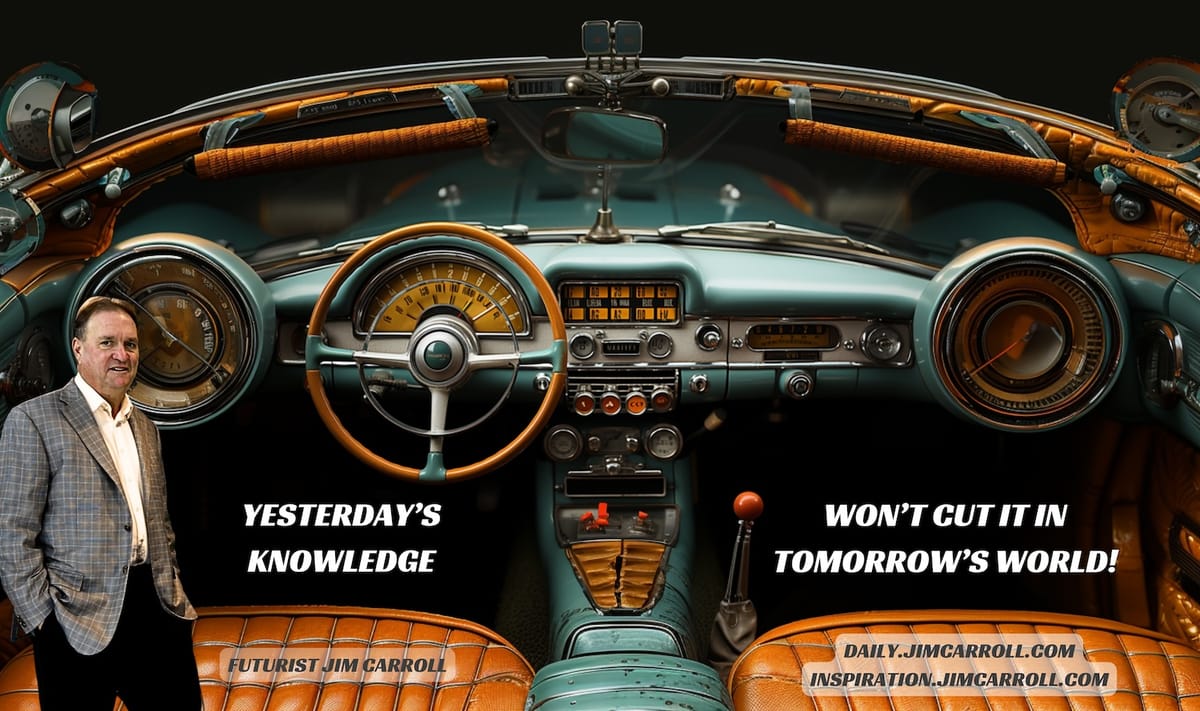"Yesterday's knowledge won't cut it in tomorrow's world" - Futurist Jim Carroll
I asked an AI to draw a picture of a car from 'the olden days,' and this is what it imagined. It might be more complex than vehicles actually used to be!
But let's talk about cars. By the time you are reading this, I'll be making my way over to Birmingham, England, where on Saturday I'll speak to several hundred managers of KwikFit automotive service locations about the future of their industry.

They're in the business of tire, brake, air conditioning, safety and other repairs, and pride themselves on responsive customer service in the face of a vastly competitive industry.
And their industry is changing - essentially, with a far-reaching change to the very essence of what a vehicle is. This is a quote I've been using for years, and I still think it captures the essence of what is underway.
“It’s amazing: If you were an archeologist and you dug up a 1900 vintage car and you dug up a 2000 vintage car, you’d look at it, you’d say they have the same DNA, the same fundamental design DNA. Mechanically driven energy from oil, powered by combustion, controlled mechanically and hydraulically, driven by a person, operated pretty much independently.
And what’s exciting right now is that we see a new DNA, a new design DNA for the automobile beginning to mature, electrically driven in addition to mechanically driven. Using diverse sources of energy, which can be in the form of electricity or hydrogen on board the vehicle as well as fossil fuels. Having the vehicle operate with electric motors. Very importantly, being able to control it digitally or electronically. And literally having cars that can drive themselves.
Future Car: Accelerating the Future
10 Nov 2014, IEEE Spectrum
As we all know, the automobile of today - until recently - is pretty much the same as it was 100 years ago, and yet, as digitization and electrification takes hold, it becomes a different thing altogether. I'm sharing with them many slides that put in perspective the nature of the change they are dealing with, and then walking them through strategies of how to respond. I'll probably share more about this keynote in the coming days.
To start, it's clear that the sheer number of different technologies in the modern vehicle is staggering.
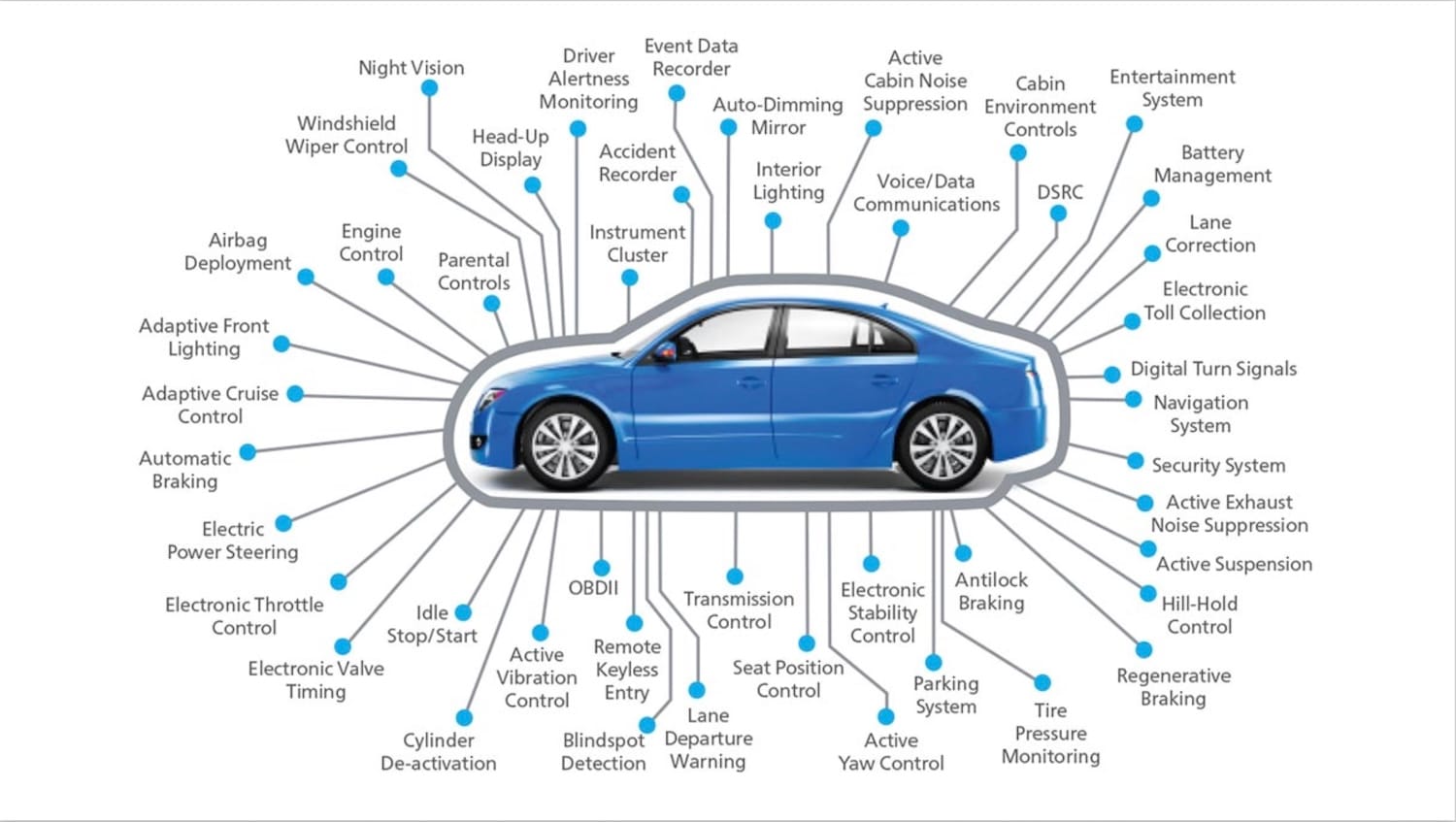
The complexity and cost of the number of dealing with these parts in the modern vehicle can be mind-numbing, as well as the labor costs to deal with this new complexity.
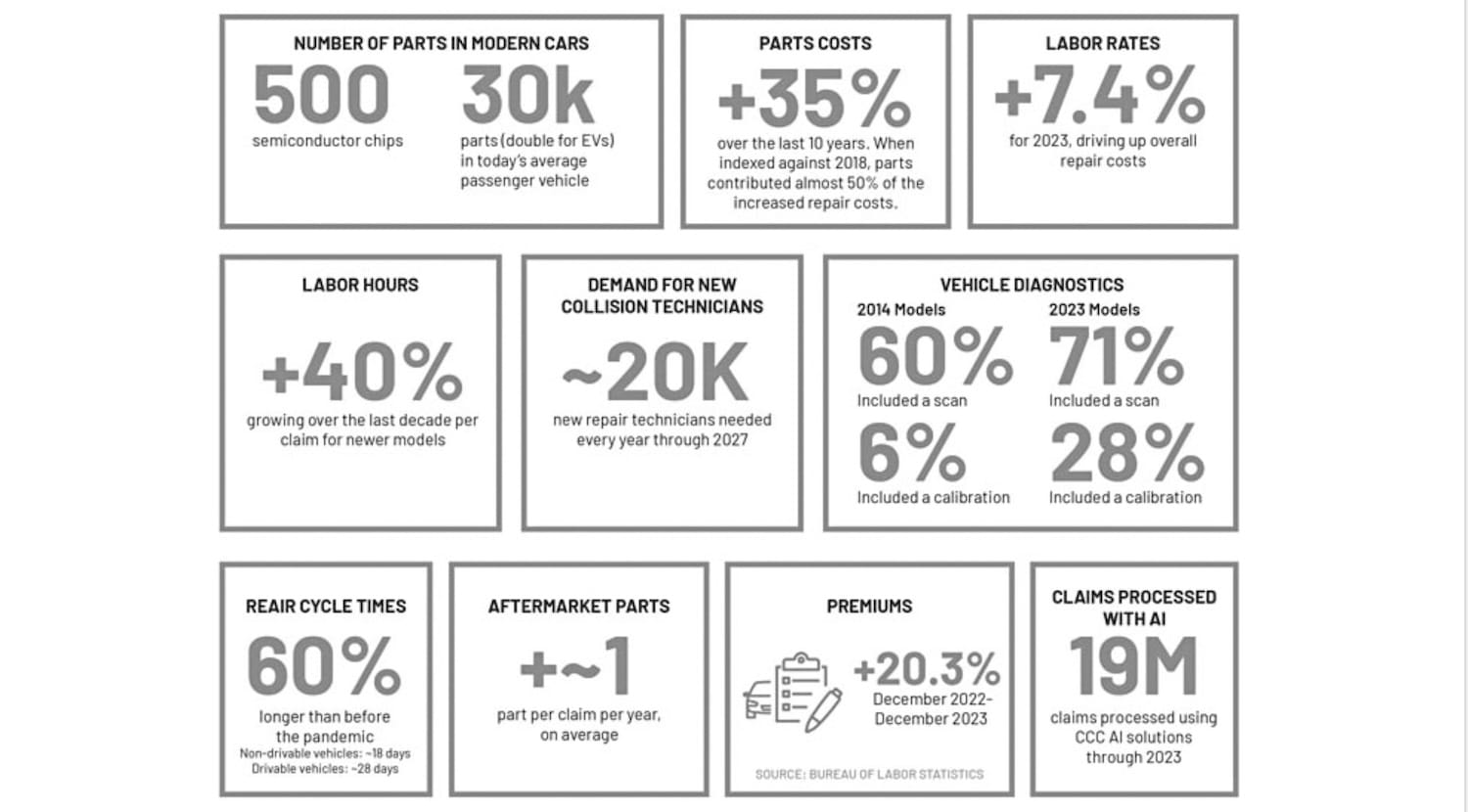
And the cost of all of these components is pretty high.
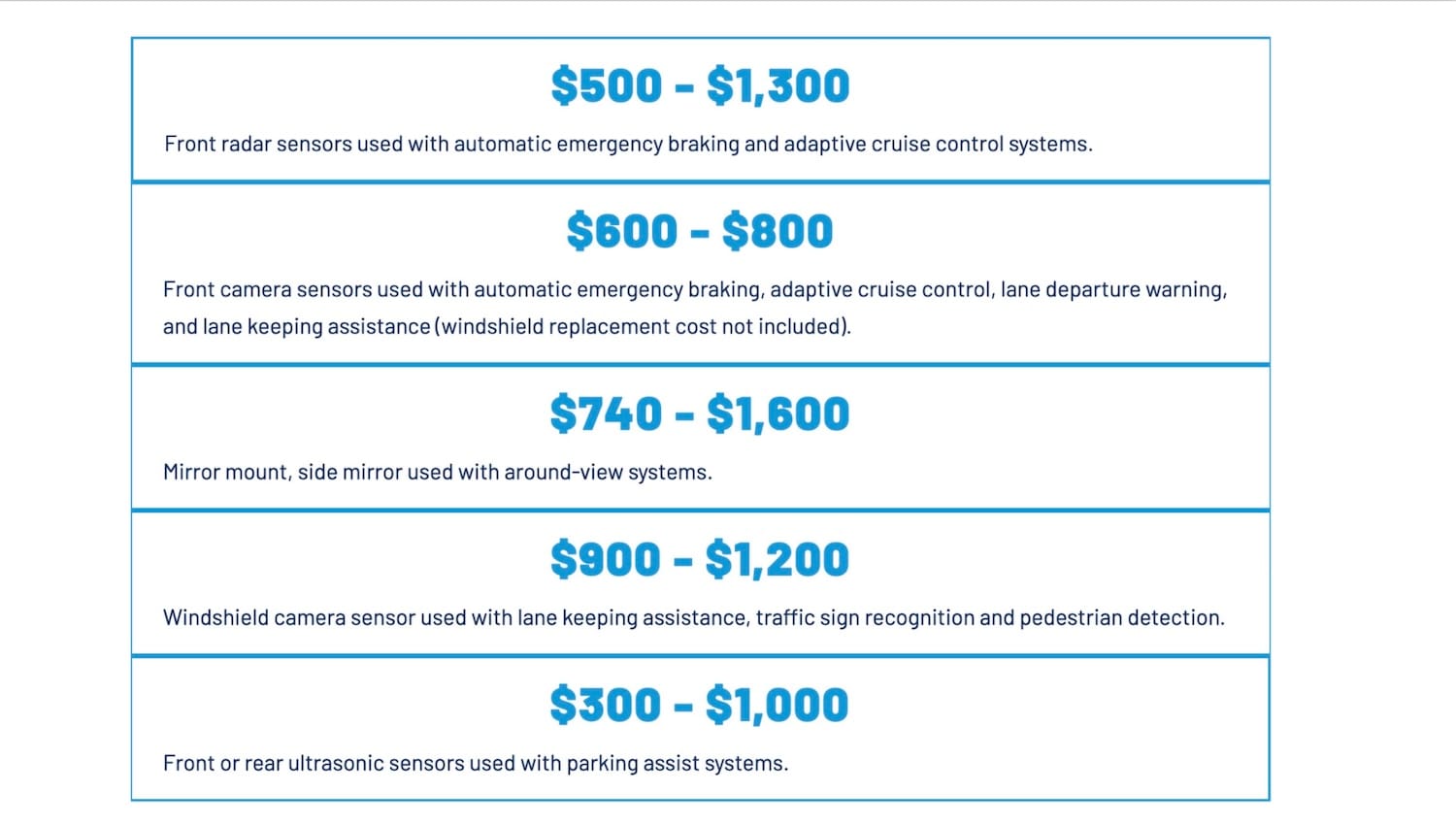
What this means is that the cost and complexity of maintenance and repair of the modern vehicle is skyrocketing:
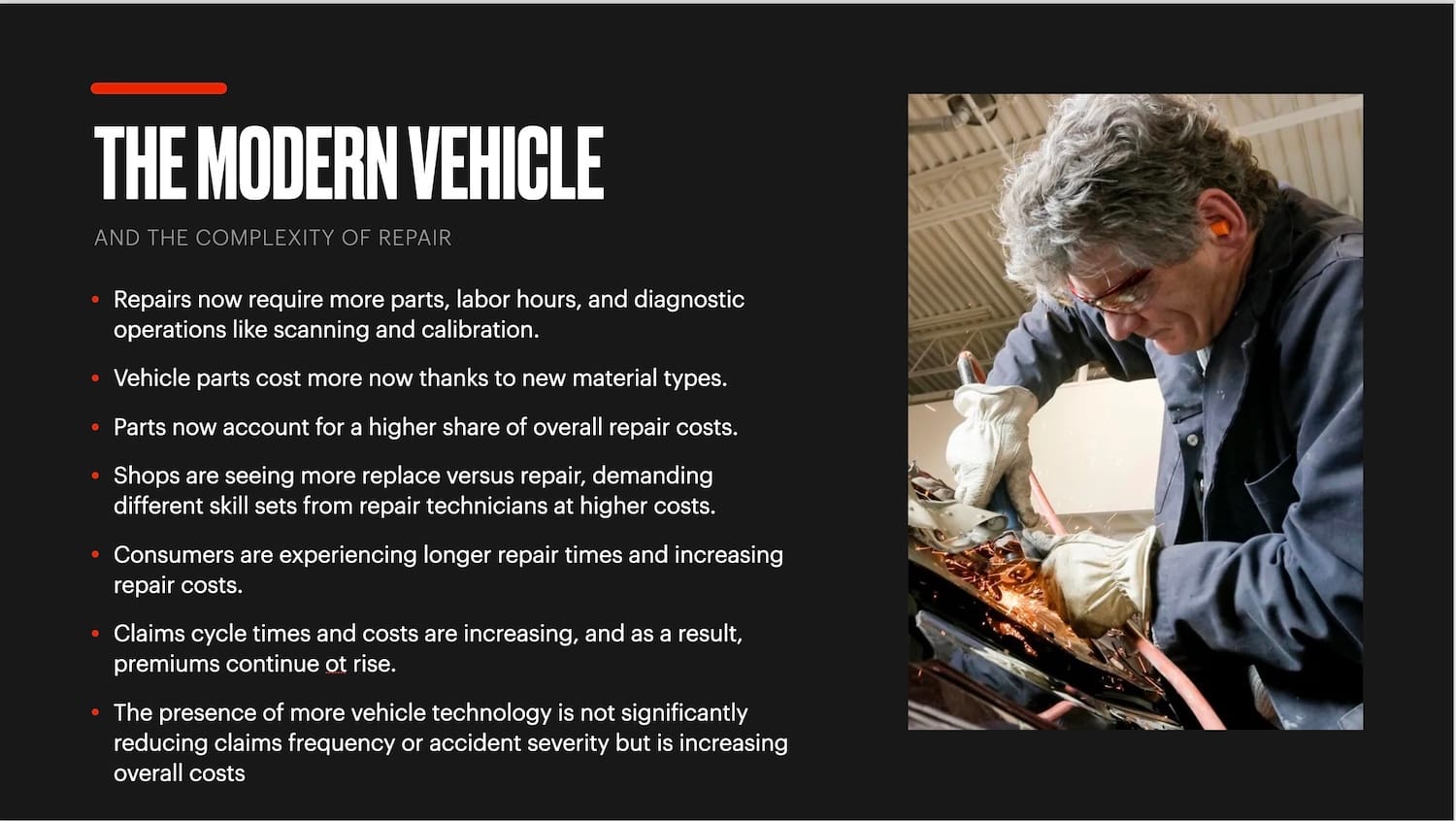
- Repairs now require more parts, labor hours, and diagnostic operations like scanning and calibration.
- Vehicle parts cost more now thanks to new material types.
- Parts now account for a higher share of overall repair costs.
- Shops are seeing more replace versus repair, demanding different skill sets from repair technicians at higher costs.
- Consumers are experiencing longer repair times and increasing repair costs.
- Claims cycle times and costs are increasing, and as a result, premiums continue ot rise.
- The presence of more vehicle technology is not significantly reducing claims frequency or accident severity but is increasing overall costs
In that context, the knowledge that the modern automotive service person must have to do his or her job is skyrocketing.
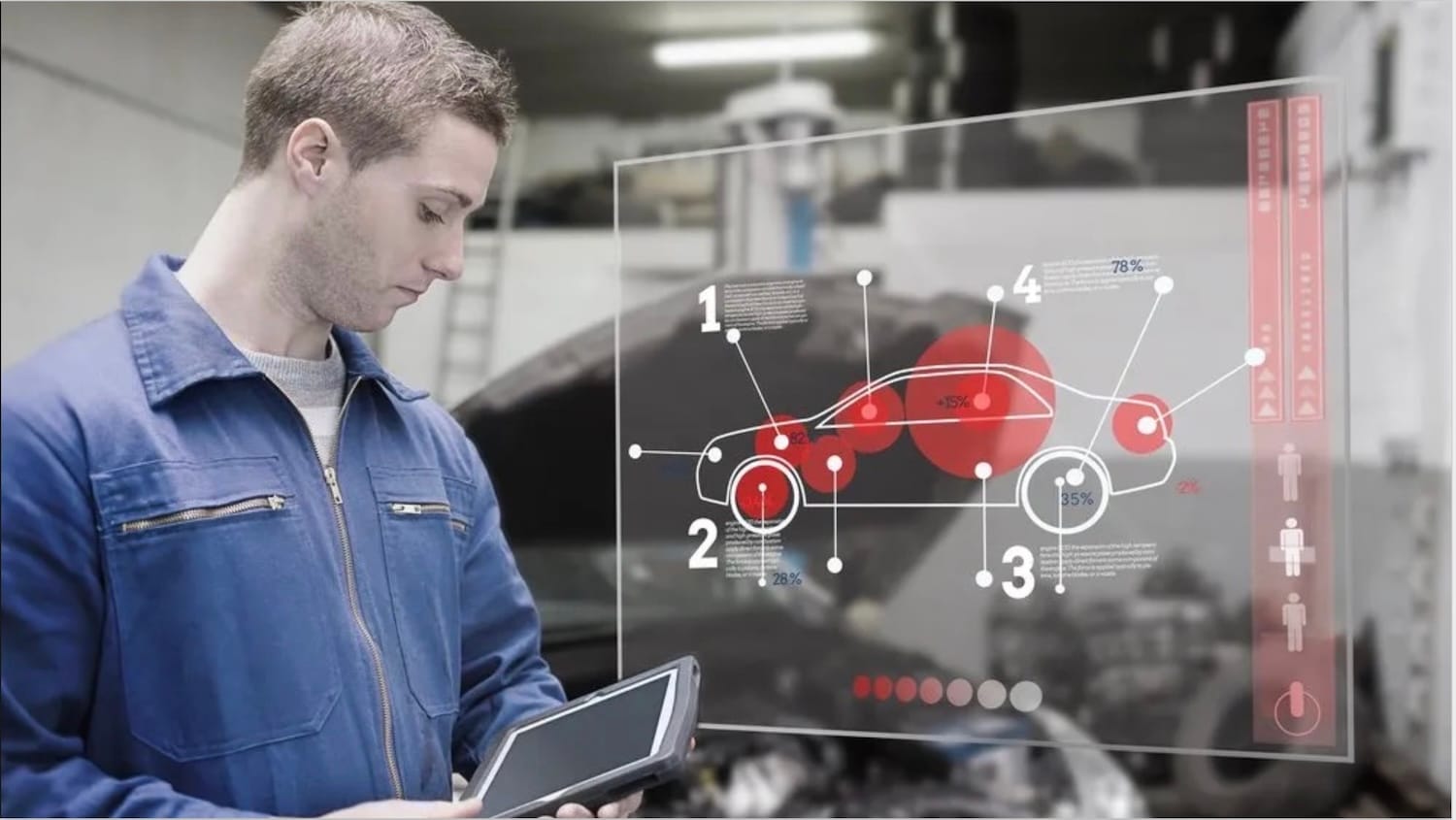
Now add electric into the mix. Cars are becoming fundamentally different - in essence, big batteries on wheels with computers. In that context, it is estimated that there will be a dire shortage of skills.
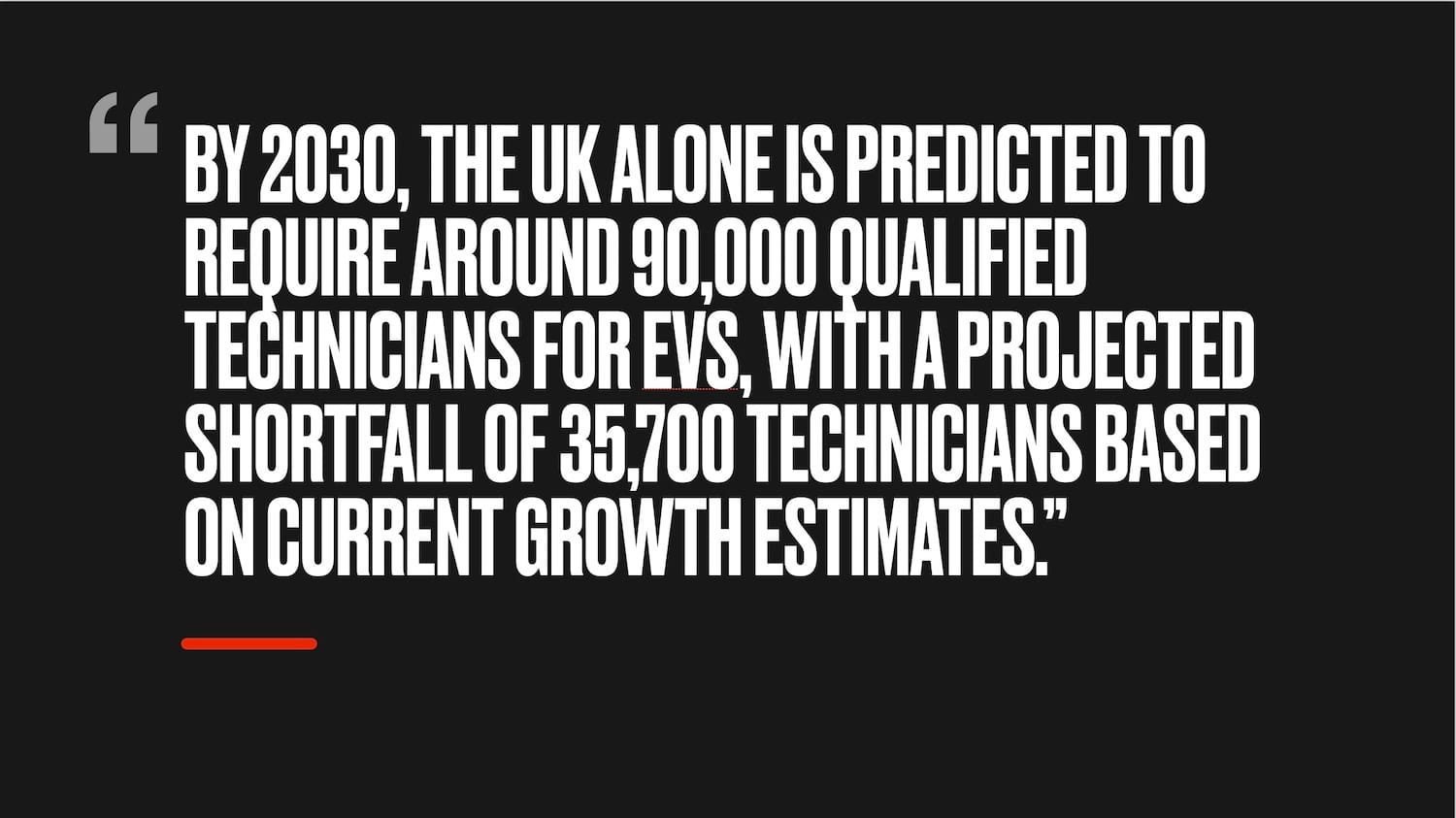
How big?
"By 2030, the UK alone is predicted to require around 90,000 qualified technicians for EVs, with a projected shortfall of 35,700 technicians based on current growth estimates.”
And here is the conundrum for this company - and for virtually every other company in every other industry on the planet. Things are becoming more complex, with a resultant acceleration in skills and knowledge, and yet, there are few people being trained to do what needs to be done. Quite simply, the knowledge that worked for us yesterday won't cut it in this vastly more complex new world - and so issues of retraining, reselling, and relearning, become absolutely critical.
That's only the beginning of what I'll be covering Saturday. Stay tuned!
Futurist Jim Carroll remembers when he coudl actually replace the spark plugs, timing belt and other items in the engine of his first vehicle.

